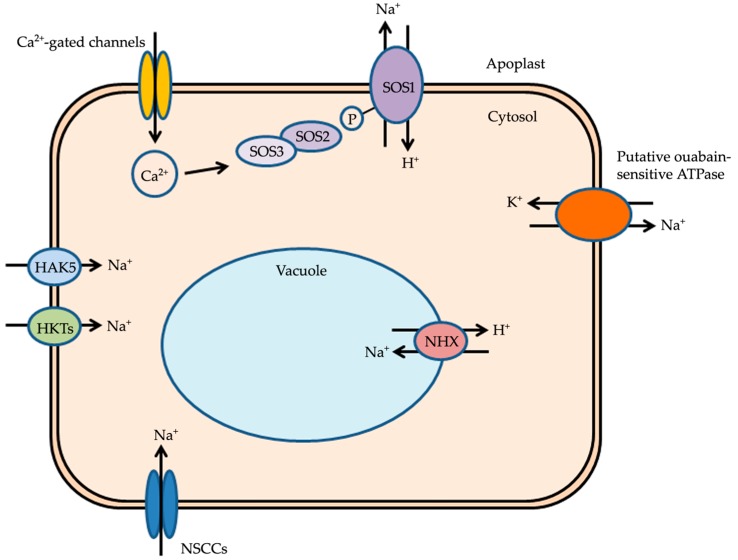Figure 1.
An overview of the mechanisms of Na+ influx, compartmentalization of Na+ in vacuoles, and Na+-sensing followed by Na+ efflux in response to salt stress. Na+ enters the cell via channels such as NSCCs and transporters such as HAK5 and HKTs. Na+ is sensed by an unidentified sensory mechanism, and Ca2+ signaling cascade is activated. The salt stress-induced increase in cytosolic concentration of Ca2+ is sensed by SOS3 (a myristoylated Ca2+ sensor protein). SOS3 interacts with SOS2 and activates its kinase activity. The SOS2–SOS3 complex becomes localized to the plasma membrane. SOS2 then phosphorylates SOS1 and activates its Na+/H+ antiporter activity facilitating Na+ efflux from the cell. Additionally, Na+ is effluxed through a novel efflux mechanism involving a putative ouabain (OU)-sensitive ATPase. Na+ is also compartmentalized inside vacuoles by NHX (a Na+/H+ exchanger) as a response to salt stress. Abbreviations: NSCCs, non-selective cation channels; HAK5, high-affinity potassium transporter 5; HKTs, high-affinity potassium transporters; SOS, salt overly sensitive; NHX, Na+/H+ exchanger.

